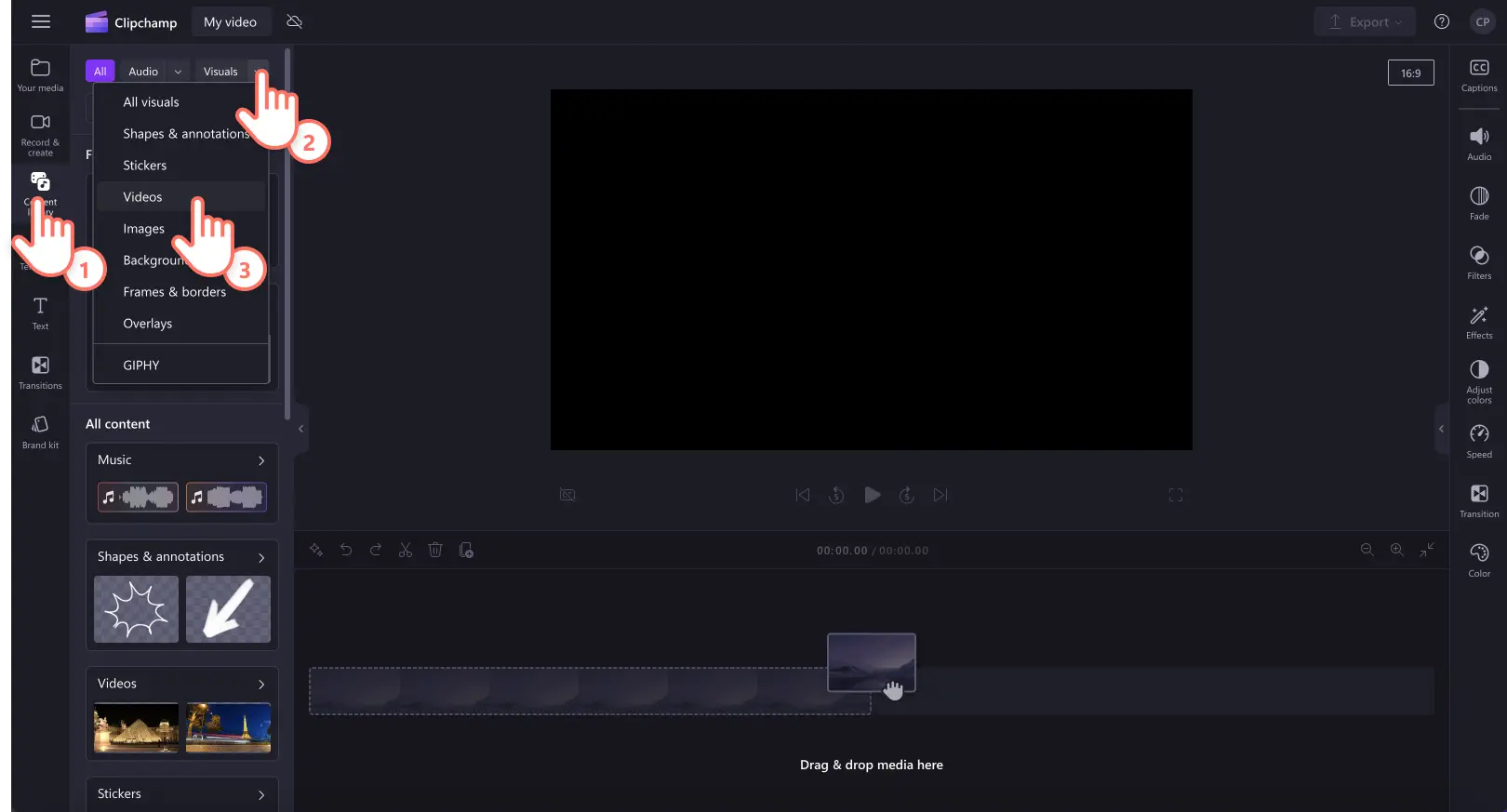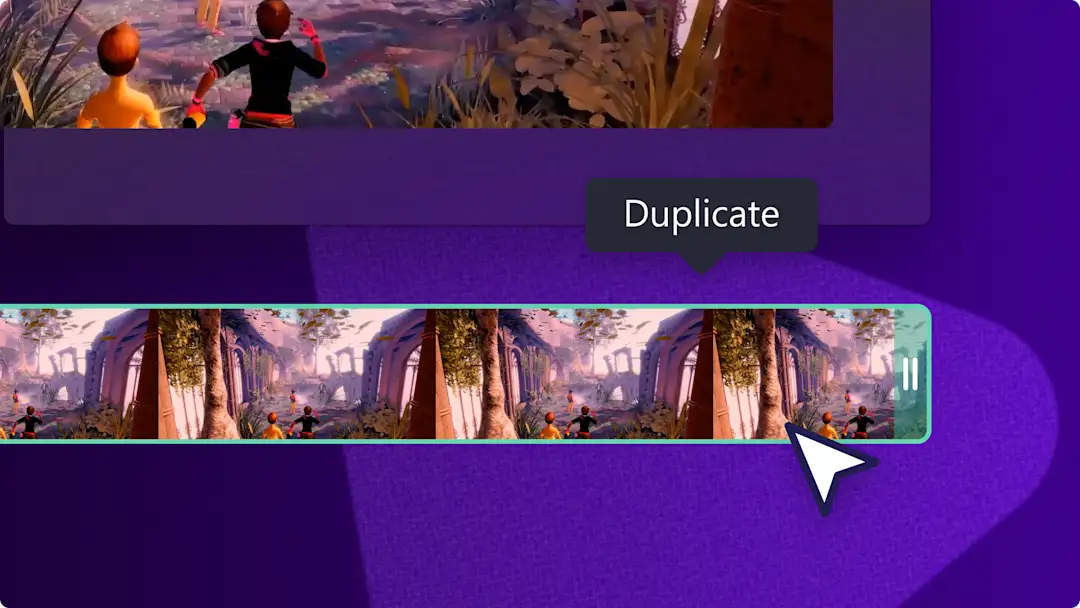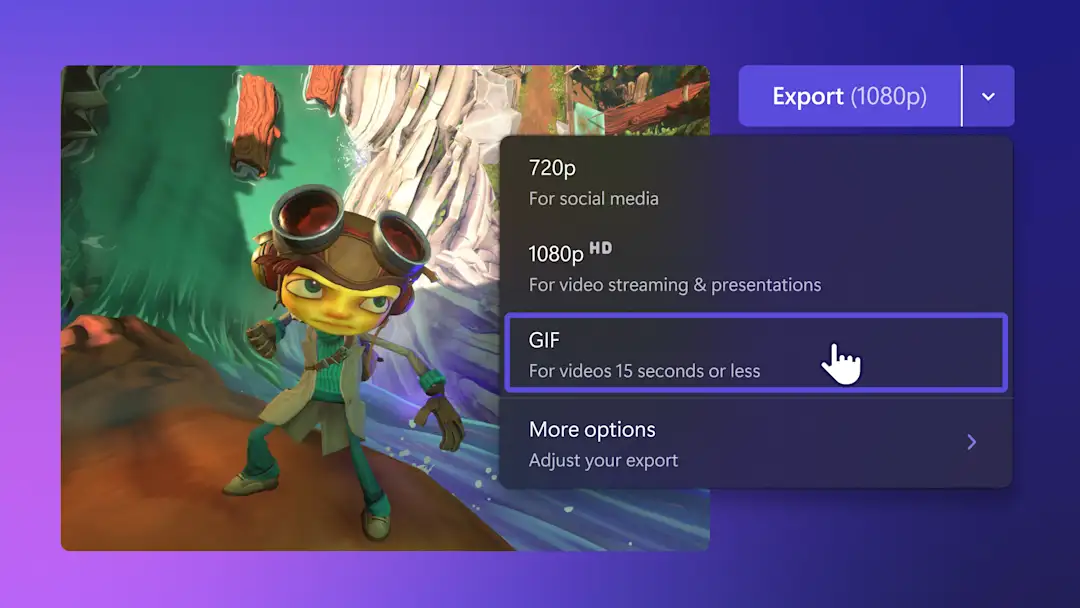Heads up! This content is relevant for Clipchamp for personal accounts. Try this link If you're looking for information about Clipchamp for work accounts.
Are you looking to add some humor and enhance excitement to your videos? From gaming highlight videos to social media promos, overlaying GIFs can help express emotions, emphasize messages, and connect with your viewers in seconds.
With our GIPHY integrations, you can easily add an endless range of GIPHY videos and stickers to your video creations. Just search through the content library using keywords like happy, scared, Christmas, and Barbiecore to find the perfect addition for your video.
Read on to learn more about our GIPHY stickers integration and how to add GIFs to videos with Clipchamp.
How to add GIFs to videos
Step 1. Import videos or select stock footage
To import your own videos, photos, and audio, click on the import media button in the your media tab on the toolbar to browse your computer files, or connect your OneDrive.
You can also use free stock media like video clips, video backgrounds, and stock music. Click on the content library tab on the toolbar and click on the visuals drop down arrow, then videos, photos, or backgrounds.
Drag and drop your video onto the timeline to get started.
Step 2. Find the right GIF for your video
Click on the content library tab on the toolbar and click on the visuals drop down arrow, then GIPHY.
Here, you can search the GIPHY library using keywords in the search bar or click on the GIPHY or stickers by GIPHY categories.
When you have found a GIF that suits your video, drag and drop the GIF onto the timeline above your video.
Step 3. Edit the size and location of your GIF
Use the freehand resize tool to edit the size of your GIF. Drag the corners in and out to make the GIF smaller and larger. You can also freely move the GIF around your video preview by clicking on the GIF, then dropping it to its new location.
Step 4. Preview and save your video
Before saving your video, make sure to preview by clicking on the play button. When you’re ready to save, click on the export button and select a video resolution. We recommend saving all videos in 1080p video resolution for the best quality. If your video has 4K video footage, paid subscribers can save in 4K video resolution.
Watch your YouTube tutorial on how to add GIFs to videos for more help!
Try popular GIFs for free
Thank you
Say a big thanks to your audience for listening or watching your presentation slideshow or tutorial video with this popular GIF of a scene from TV series The Office with Steve Carell.
Hello
Add a welcome wave to your demo video with this fun GIF of character Raphael from TV series The Simpsons.
Laughter
Emphasize a joke or fully blooper in your unboxing video with this GIF of former Big Brother cast member Elissa Slater.
I love you
Share the love in your next virtual greeting card for a seasonal holiday, birthday, or Valentine's Day with a wholesome animated GIF.
Stickers
Add GIPHY stickers to any video to enhance your video's aesthetic and message.
Frequently asked questions
Can I make my own GIF with Clipchamp?
Easily create your very own 15-second GIFs with our online GIF maker. Convert a wide variety of video file types like MP4 or YouTube videos, resize to suit any social media platform, and share directly with no watermarks.
Do GIFs have sound?
GIFs don't include any sound. You can still add audio to your videos, including GIFs, but make sure to export videos as an MP4 file, not GIF.
Can I import other creators GIFs into my video?
You can save any GIF directly from GIPHY or download videos from YouTube to upload to Clipchamp. Feel free to use already published GIFs from the internet in your videos.
Do Clipchamp GIFs have a watermark?
All GIPHY GIFs and stickers are free to use and watermark-free for all Clipchamp subscribers.
If you’re looking to expand your editing skills, take a look at how to make green screen memes or explore creating video memes with GIFs. You can also make your own with our GIF Maker.
Start creating videos with GIFs today with Clipchamp for free or easily download the Clipchamp Windows app.
















